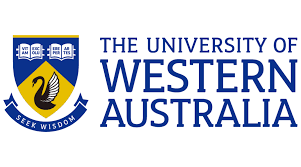University of Western Australia: Using data science to revolutionise geology logging
A new $6.1 million four-year research partnership between the University of Western Australia (UWA) and Rio Tinto Iron Ore (RTIO) will develop innovative data science solutions for automated geology logging leading to improved mining practices.
The partnership, which follows more than 10-years’ collaboration between UWA’s data-science team and RTIO, will employ five full time research staff and provide training opportunities for a number of industry-driven PhD projects.
Dr Daniel Wedge from UWA’s Centre for Data-driven Geoscience (CDG) at the School of Earth Sciences said UWA’s expertise would be used to help RTIO’s Mine Geology Group with the challenges of objectively logging geological materials.
“Until recently, geologists, metallurgists and geotechnical engineers have had to manually interpret and record materials found in drill core samples, a procedure which can be time-consuming and challenging,” Dr Wedge said.
“Our project will use machine learning, computer vision, spatial modelling and optimisation techniques to integrate diverse drill hole data including spectral, image, geochemistry and geophysics data to model material compositions, geomechanical proxies and their spatial distribution.”
Dr Angus McFarlane, RTIO Principal, Ore and Product Characterisation, said past partnerships between UWA and RTIO resulted in UWA’s commercialisation of automated downhole image analysis software, and three RTIO-driven joint patent applications on machine learning based modelling of geology.
“The UWA team has already successfully developed machine learning based methods and tools for the analysis of stratigraphy and their material compositions for resource evaluation,” Dr McFarlane said. “The latest engagement will adapt and extend some of these advances for mining, the next stage of the industry workflow from resource evaluation.”
Professor Eun-Jung Holden, who leads CDG and UWA’s Data Institute, said as in previous engagements, the new project involves entwining advanced data science, geological understanding of the data, and RTIO’s extensive knowledge of the mining area.
“Applying machine learning based solutions tailored for industry is a big challenge. As a research team, we benefitted greatly by being integrated into our sponsor’s teams, to get experience of their current day-to-day practices and geological knowledge.
Professor Eun-Jung Holden
“Applying machine learning based solutions tailored for industry is a big challenge,” Professor Holden said. “As a research team, we benefitted greatly by being integrated into our sponsor’s teams, to get experience of their current day-to-day practices and geological knowledge.”
Dr Tom Horrocks from the School of Earth Sciences said it also improved our understanding of what end-user geoscientists do with the data at various stages, what they want, and how best to integrate these new solutions into a larger system.”
RTIO Manager Geoscience & Water, Research, Development and Technology, Tom Green, described the project as important for the future.
“UWA and RTIO teams have developed a respectful and collaborative culture that returns mutual benefits,” Mr Green said. “We’re now are at the forefront of transforming our geological interpretation using data science through this partnership.”

